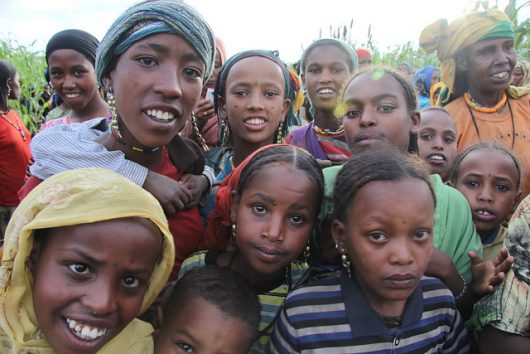Top 10 Facts About Living Conditions in Ethiopia

Ethiopia, located in the Horn of Africa, is home to the second largest population in Africa. Ethiopia’s economy grows by 10 percent each year, one of the highest growth rates in its region. Despite this remarkable number, it remains one of the poorest nations in the world. These top 10 facts about living conditions in Ethiopia are characterized by the economic, social and political reality of a developing nation.
Top 10 Facts About Living Conditions in Ethiopia
- As one of the fastest growing economies and one of the poorest countries in the world, Ethiopia’s population may not see its growth reflected in current living conditions for years. For the last seven years, the country boasted a two-digit economic growth while a third of the population lived below the poverty line. Moreover, its GDP reached close to 10.9 percent in 2017. This has been attributed to a number of elements that are shifting the living conditions such as the expansion of agriculture, construction and services, as well as modest manufacturing growth.
- Ethiopia lacks access to clean water and sanitation, which lower living conditions. While the number of citizens with access to clean water has doubled in the last 20 years, 61 million people still do not have access to water and 65 million live without a proper sanitation system. This creates an adverse living condition as droughts result in famine, food shortages and water-borne diseases that force people to rely heavily on contaminated or stagnant water sources.
- One of the biggest issues affecting the living condition, especially in Ethiopia’s capital, is the housing crisis which has forced 80 percent of the population in Addis Ababa to live in slums. In addition, it has subjected over 12,000 children to live on the streets. One of the biggest attributes is an increase in the rural exodus which has resulted in an urbanization rate of 8 percent per annum.
- According to WHO reports, the health status of Ethiopia is poor with an abundance of potentially preventable diseases such as HIV, malaria, tuberculosis, intestinal parasites, acute respiratory infections and diarrhoeal diseases. This issue, in addition to the health system being underdeveloped, is a result of the aforementioned issues including a lack of access to clean water and sanitation, poverty, migration, and droughts. These conditions make the population vulnerable to contracting an otherwise preventable disease.
- The most prominent means of transportation in Ethiopia and the biggest part of the sector is road transport. Ninety percent of freight transportation, both in the import and export sectors, and 95 percent of the public transportation services are carried out by the road transport branch. While a majority of the urban population covers only short to medium range distances on foot, in rural areas people for the most part travel on foot except for the few instances that they use draught animals.
- High unemployment rates, especially for youth, hinder Ethiopia from growing even more. Despite the public sector’s efforts to reduce unemployment and create jobs, there is a need for the private sector’s contribution, since it is considered a longterm source of most jobs. The private sector can create new jobs in new areas such as IT, which can be a sustainable solution for the nation’s unemployment challenges.
- According to the IMF’s analysis of Ethiopia’s financial sector, the nation has a long way to go in filling the gap between financial support available and the pressing need for small business investments. This is particularly true in the rural areas where it has not given heed to the nation’s state-run economy, where little direct foreign investment has been placed. The Director of the Association of Ethiopian Microfinance Institutions, Wolday Amha, says that loans needed by micro-enterprises are sourced from people with low income who are the beneficiaries. The director notes the danger of an economic and political crisis if this enterprise gets hijacked by the private sector.
- Fifteen years ago, only 25 percent of boys and 20 percent of girls went to school, and Ethiopia now covers 90 percent of students. The main causes for this change include building more schools in rural areas, training more teachers and giving room for local communities to have a say on how their children get educated. Furthermore, the Ethiopian government has put a focus on primary education that has the advantage of increasing the number of students going to school.
- Similar to the approach nations take in its region, Ethiopia has reported issues with freedom of expression in a keen effort to curate a perception around its developmental achievement and not its drawbacks. Despite pressure from aid organizations, the government showed a prolonged hesitance to tell the international community that there was a serious drought issue three years ago.
- The state security system that was created and maintained for 25 years by the ruling party TPLF/EPRDF has contributed to the undisputed authority of the party as well as advancing state-led developmental efforts. Over the years, both peaceful and forceful attempts to challenge the ruling party have been successfully suppressed. The result of this system has been the difficulty to discern the government from the party which has morphed security organizations into executive agencies for the ruling party.
The Road to Improved Living Conditions
The government of Ethiopia has put in place its Growth and Transformation Plan, which has put forward a goal for development and economic projects that aim to make Ethiopia a middle-income country by 2025.
This is an ambitious vision that sets out to radically change huge sectors such as health, education and finance, which is also where the nation faces its biggest challenges.
– Bilen Kassie
Photo: Flickr
